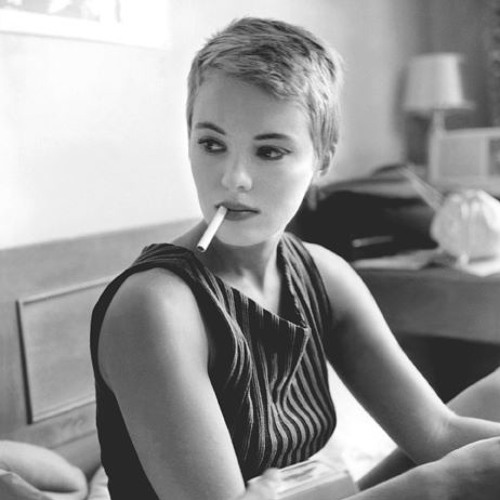Introduction:
In the annals of cinema history, Jean Seberg remains a figure both celebrated and tragic, an American ingénue whose meteoric rise and untimely demise captivated audiences and left an indelible mark on the cultural landscape of the 1960s. With her ethereal beauty, enigmatic presence, and fearless approach to her craft, Seberg embodied the spirit of an era defined by revolution, rebellion, and reinvention. In this extensive exploration, we delve into the life, career, and lasting legacy of Jean Seberg, an American in Paris in the 60s.
Early Life and Beginnings:
Jean Dorothy Seberg was born on November 13, 1938, in Marshalltown, Iowa, to Dorothy Arline and Edward Waldemar Seberg. Raised in a conservative Midwestern household, Seberg’s upbringing was marked by a sense of restlessness and yearning for something more. At the age of 17, she auditioned for the lead role in Otto Preminger’s film adaptation of “Saint Joan” (1957), beating out thousands of actresses for the coveted part. Overnight, Seberg was catapulted to stardom, hailed as the epitome of youthful innocence and purity.
Rise to Prominence:
It was in the late 1950s and early 1960s that Jean Seberg emerged as one of the most prominent and influential actresses of her generation, earning critical acclaim and widespread recognition for her captivating performances. In 1957, she made her film debut in Otto Preminger’s “Saint Joan,” earning a Golden Globe nomination for Most Promising Newcomer and establishing herself as a rising star to watch. However, it was her iconic portrayal of Patricia Franchini in Jean-Luc Godard’s “Breathless” (1960) that solidified her status as a cinematic icon.
As the embodiment of the French New Wave aesthetic, Seberg captivated audiences with her naturalistic performance, unconventional beauty, and androgynous allure. Her portrayal of the free-spirited American expatriate captured the zeitgeist of the era, embodying the spirit of rebellion and nonconformity that defined the 1960s. With her signature pixie haircut, minimalistic wardrobe, and effortless cool, Seberg became a fashion icon and a symbol of liberation for a generation of young women.
Legacy and Impact:
Jean Seberg’s impact on the world of cinema extends far beyond her iconic performances and accolades. With her fearless approach to tackling challenging and unconventional roles, she shattered stereotypes and challenged conventions, paving the way for future generations of actresses to break free from traditional gender roles and expectations. Her portrayal of complex, multidimensional characters defied easy categorization, transcending genre and resonating with audiences around the world.
Seberg’s influence can be seen in the work of countless actresses who followed in her footsteps, from Jane Fonda and Diane Keaton to Gena Rowlands and Michelle Williams. Her legacy lives on in the countless lives she touched and the indelible mark she left on the landscape of cinema. Beyond her contributions to film, Seberg’s activism and humanitarian work continue to inspire and empower women around the world, a testament to her enduring legacy as a trailblazer and icon of female empowerment.
In Conclusion:
Jean Seberg remains an enduring symbol of the 1960s, her name synonymous with the glamour, sophistication, and rebellion of the era. With her unforgettable performances, groundbreaking roles, and timeless beauty, Seberg captivated audiences and critics alike, leaving an indelible mark on the world of cinema. As we celebrate her legacy and contributions to the art of filmmaking, we are reminded of the power of cinema to inspire, provoke, and transcend the boundaries of time and space. Jean Seberg may have left this world too soon, but her spirit lives on in the hearts and minds of cinephiles everywhere, a testament to the enduring power of her talent and charisma.









